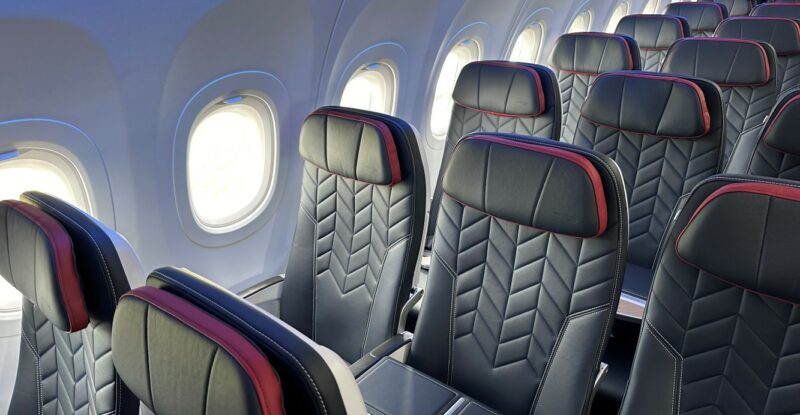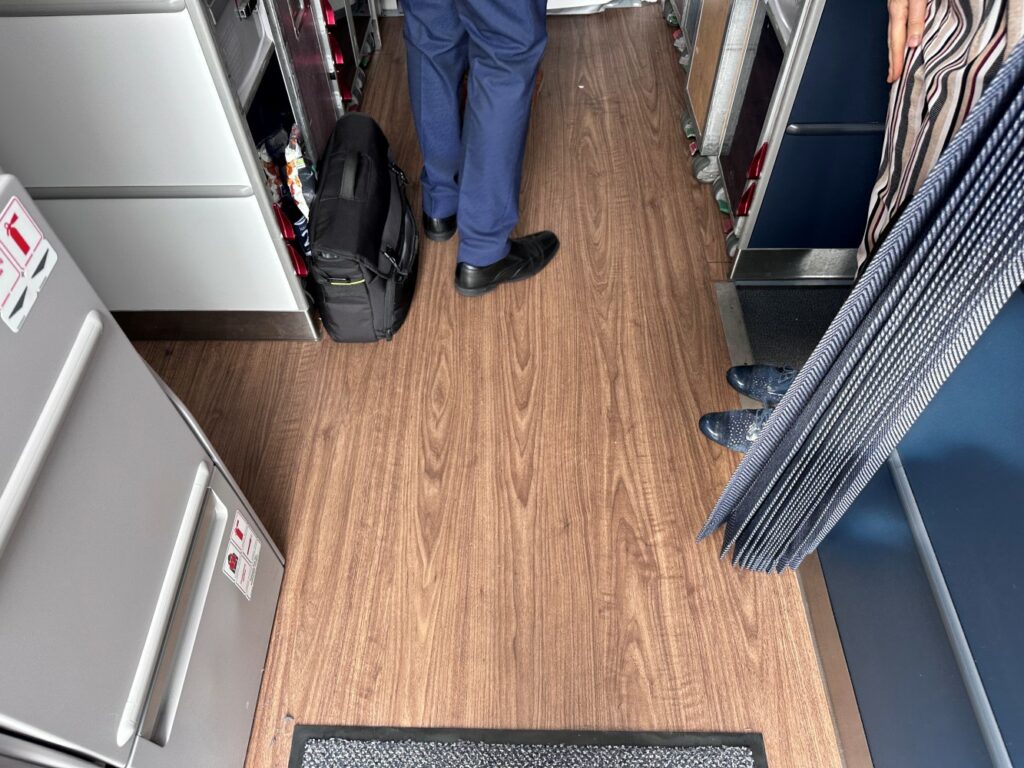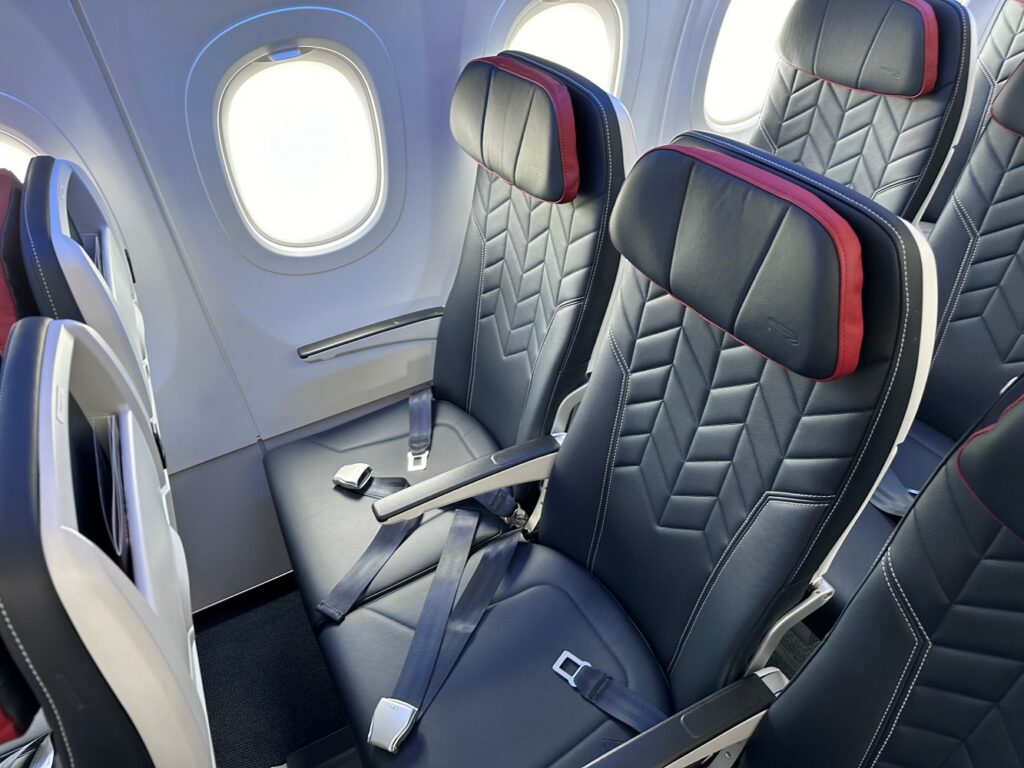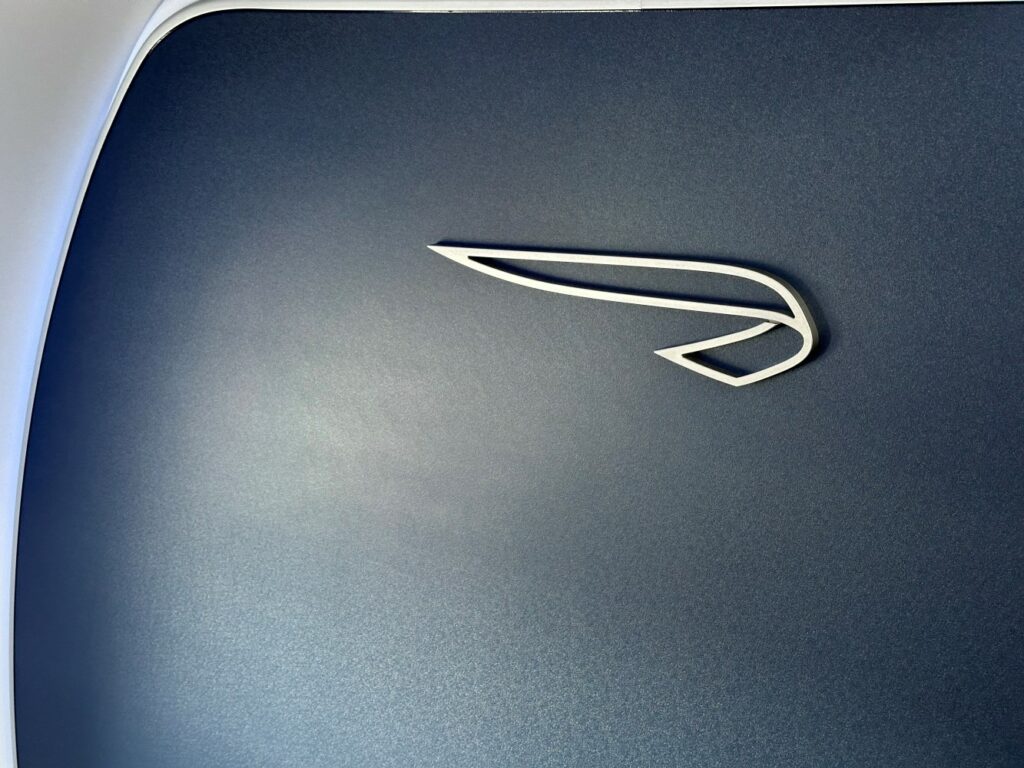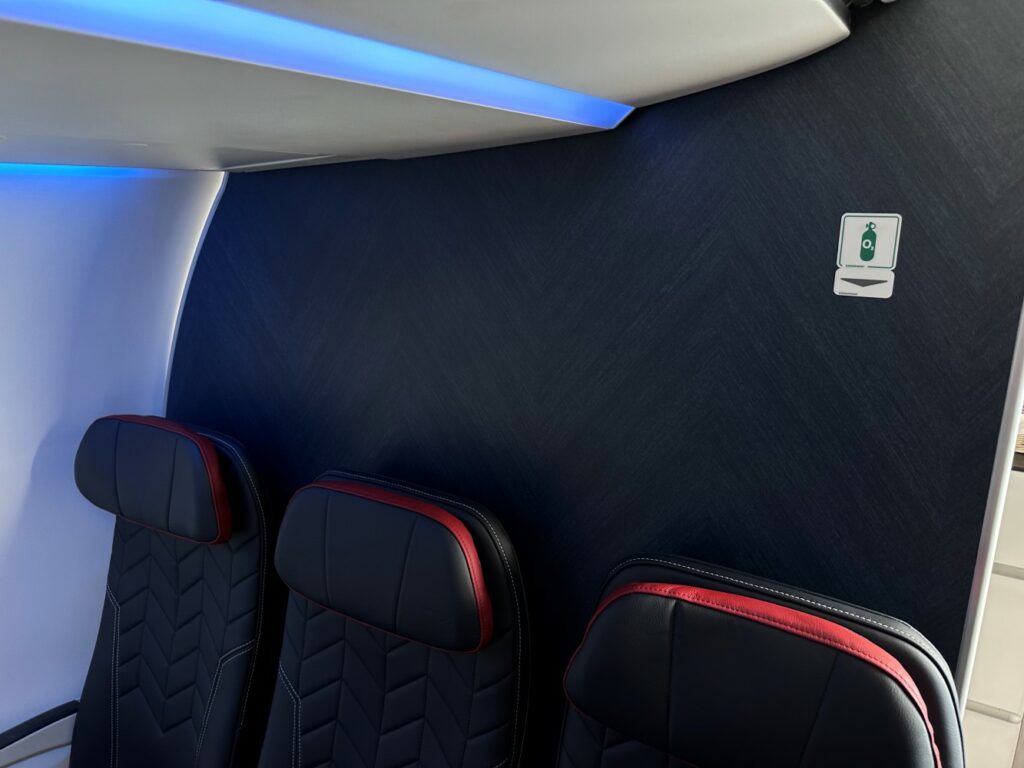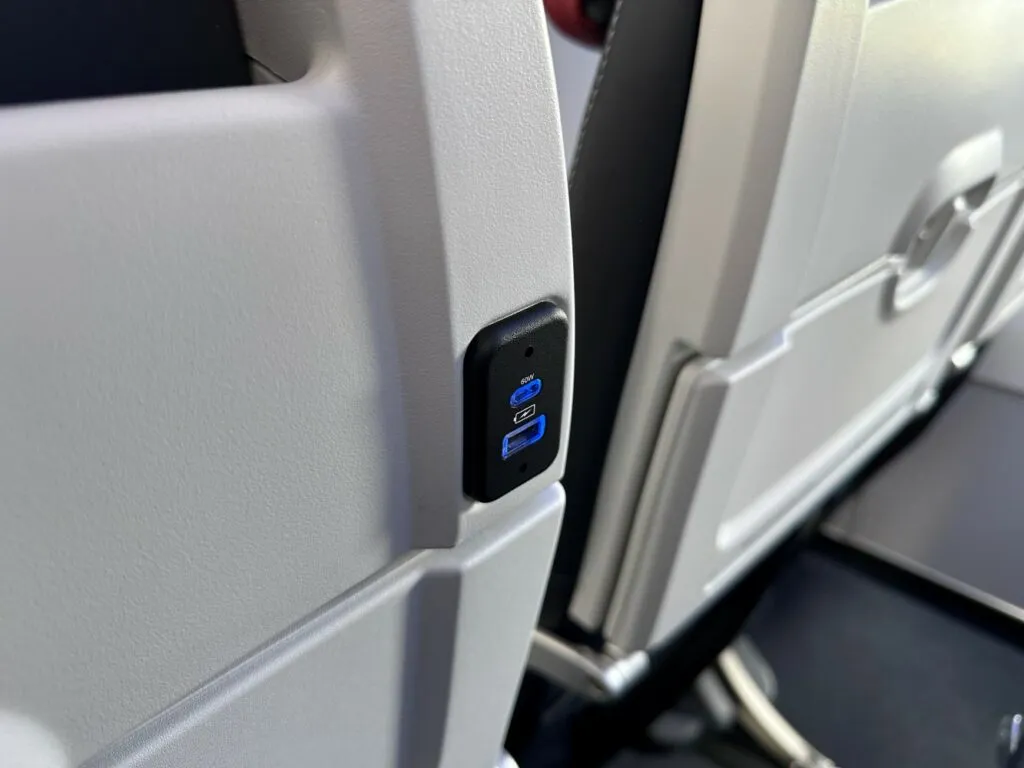 FARNBOROUGH — British Airways’ Airbus A320neo on static display at the Farnborough Airshow feels like it heralds a new BA.
FARNBOROUGH — British Airways’ Airbus A320neo on static display at the Farnborough Airshow feels like it heralds a new BA.
Your first step is onto a warm wood-effect non-textile flooring, which covers the length of the galley and forward to the lavatory and flight deck.
The grain on the floor draws you subconsciously towards the cabin, where the new Collins Meridian seats stretch all the way back. Indeed, the entire cabin is Meridian, new texture, headrest and all. Farewell to the hybrid cabin where the seats up front in the aircraft that potentially convert to Club Europe are fully featured and the rest down the back are barebones slimlines.
This move away from one of the most starkly visible hybrid cabins is notable from an airline seeking to position itself at the premium end of the market, beyond its low-cost carrier competitors.
BA has made good choices in the seat CMF (color, materials and finish) and in the wider cabin: yes, it’s essentially an A320neo full of economy seats (some of which are sold as business) but this is one of the best-looking of its ilk.
British Airways did itself a disservice in the colour adjustments to the media photos it distributed earlier this year: the red is an elegant and handsome burgundy in person rather than the bright pop of higher-saturation red that skated too close to Air France and Delta in the images.
Of particular note is the clever way the designers have implemented a dark blue background element at eye level, behind the backrest at the literature pocket. This breaks up the usual problem of what might otherwise feel like serried ranks of greige thermoplastics in an impressive way. Similarly, the little pops of red from the headrest that appear above the seats are visible at random, which also breaks up the tunnel effect.
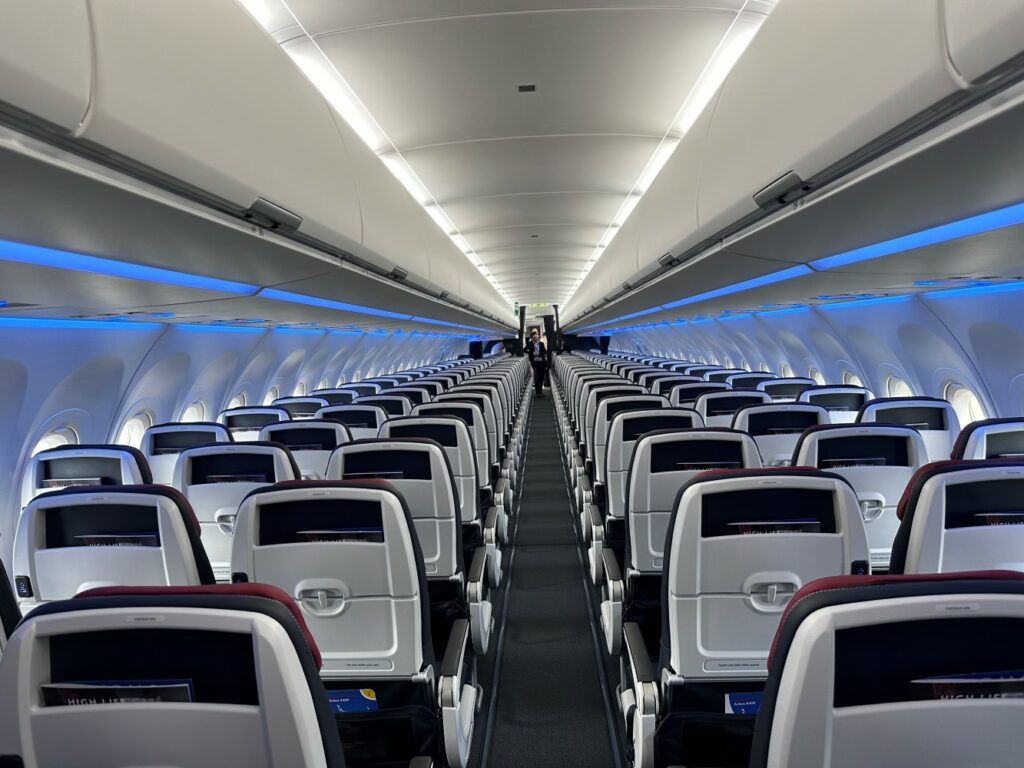
The effect from the blue section inside the literature pocket area at eye level is smart. Image: John Walton
The alternating parallelogram pattern on the seatbacks — airline execs tell me they call it the herringbone — is fine, although it does still feel a little too close to other airlines’ motifs.
The business class table has also had a slight upgrade, including around functionality. Instead of a complicated swing-up mechanism this now simply attaches to each armrest, and can be stowed in a special compartment underneath the seat pan.
Your author remains agnostic-to-bearish about this seat table in general. For a start, it’s still in an inherently slightly odd position that’s prone to a stray elbow knocking a cocktail over the passenger next to you, although the rear half now being leather should dissuade placement of drinks back there.
The table also creates a hidden grime magnet zone underneath it that is very rarely properly cleaned, especially in the front few rows that are always Club. And, genuinely there’s not a lot of additional functionality when the empty middle seat has a fold-down tray table of its own.
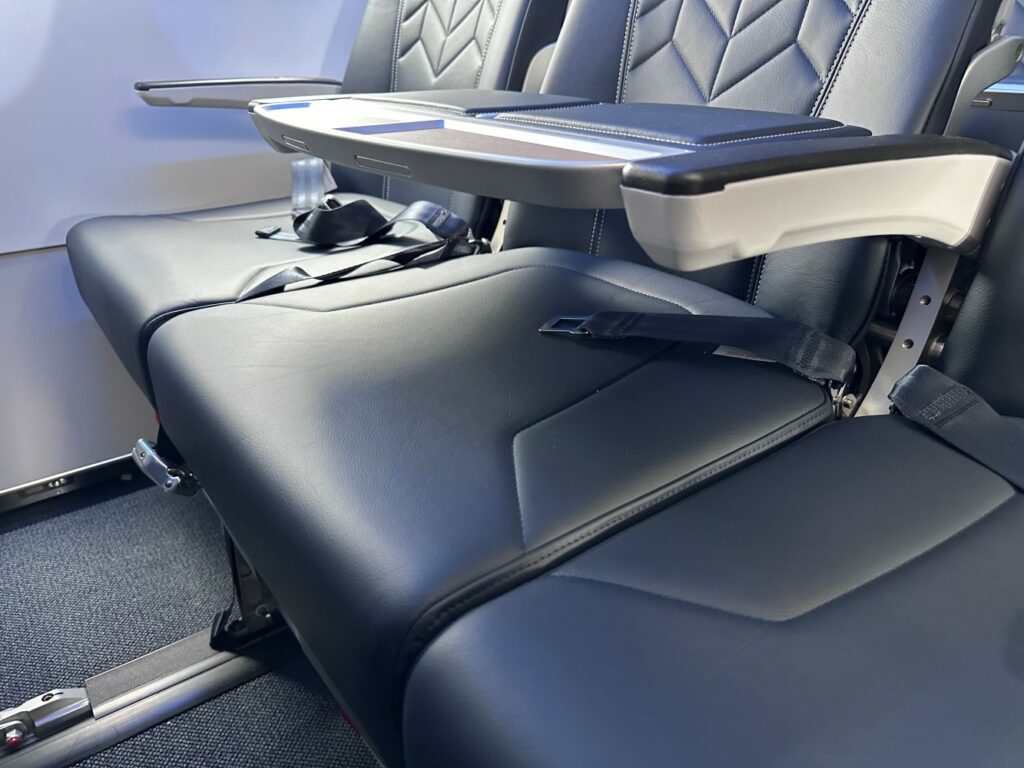
One of the issues with the table is that the area underneath is seemingly invisible to cleaners. Image: John Walton
Elsewhere in the cabin, the front bulkhead features a new outline speedmarque on a slightly textured blue thermoplastic. It’s pleasant enough, but with the wide variety of thermoplastic — or indeed non-plastic — surface coverings that suppliers have on offer, perhaps this could have given a little more interest.
The rear bulkhead, meanwhile, is a blue-stained wood effect in a herringbone pattern, rather like a parquet laminate floor. It’s a good pop of texture behind what are, as unfortunately has become the norm for A320neo cabins, a row of much tighter 17-inch-wide seats with 28 inches of pitch as the densified A320 cabin narrows.
The rear bulkhead is home to a split-accessible lavatory combination on the back wall, while the front lav also offers slightly more manoeuvrable space than previous generations with extra handhelds.
On reflection, British Airways’ decision to bury the details of this excellent new shorthaul cabin in a bundled “modernisation initiatives” announcement earlier this year is a curious one.
Within the space and density envelope of the European narrowbody flexible-Eurobiz cabin, this is both a marked improvement over the previous generation and stands BA at the forefront of its full-service carrier competition.
Related Articles:
- BA unveils Collins Meridian and free messaging as part of new PaxEx
- Come dine with me at BA’s Heathrow T3 First Class lounge
- How to elevate the Eurobiz concept beyond the cocktail table
- A tale of two classes: British Airways World Traveller and WTP
- British Airways’ LHR-NCL domestic flight seems hard to justify
Featured image credited to John Walton




